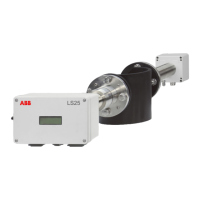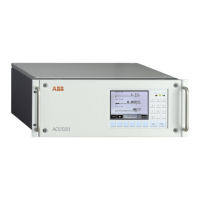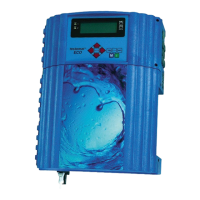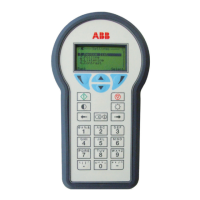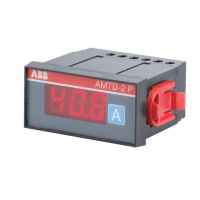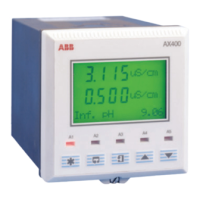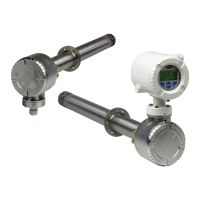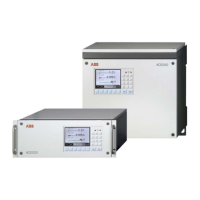AO2000 CONTINUOUS GAS ANALYZERS | OI/AO2000-EN REV. B 275
Cross sensitivity alignment
Electronic cross sensitivity correction
AO2000 offers the ability to electronically correct cross sensitivity, in con-
trast to using purely physical methods (for example, for infrared absorption,
optical filter or flowing reference gas).
Electronic cross sensitivity correction is possible with the Caldos25,
Caldos27, Limas11 IR, Limas21 UV, Limas21 HW, Magnos206, Magnos28 and
Uras26 analyzer modules. In addition, this function must be factory-set per
customer order.
The electronic cross-sensitivity correction is configured as a function block
application. The Technical Information "Function Blocks – Descriptions and
configuration" contains complete information on the individual function
blocks.
Cross sensitivity correction is an offset correction.
Interference component concentration is continuously measured and cor-
rected by means of the measurement value. Alternatively, the interference
component concentration can be entered directly as a correction value dur-
ing the cross-sensitivity alignment.
Internal and external cross sensitivity correction
Interference component concentration can be measured in two ways:
• Using the analyzer module with which the sample component is meas-
ured (internal cross sensitivity correction, possible only with the
Limas11 IR, Limas21 UV, Limas21 HW and Uras26 analyzer modules) or
• With another AO2000 analyzer module or another analyzer (external
cross sensitivity correction). The correction signal, i.e. the measured
value of the interference component is transferred to the analyzer mod-
ule with the sample component to be corrected via the system bus or
analog input.
When should a cross sensitivity alignment be performed?
A cross sensitivity alignment, i.e. alignment of the cross sensitivity correc-
tion function, should not be performed in normal operation.
We recommend checking the cross sensitivity correction once a year.
Test gas for cross sensitivity alignment
One of the following test gases is needed for the cross sensitivity alignment:
• Either a sample component-free test gas containing the maximum con-
centration
• Or the interference component span gas of the interference component.
Prior to the cross sensitivity alignment
Prior to the cross sensitivity alignment, the zero and end points of the ap-
plicable sample and interference components must be calibrated with test
gases in the respective analyzer module.
Menu path
MENU → Maintenance/Test → Analyzer spec. adjustm. →
Cross sensitivity adjustm.

